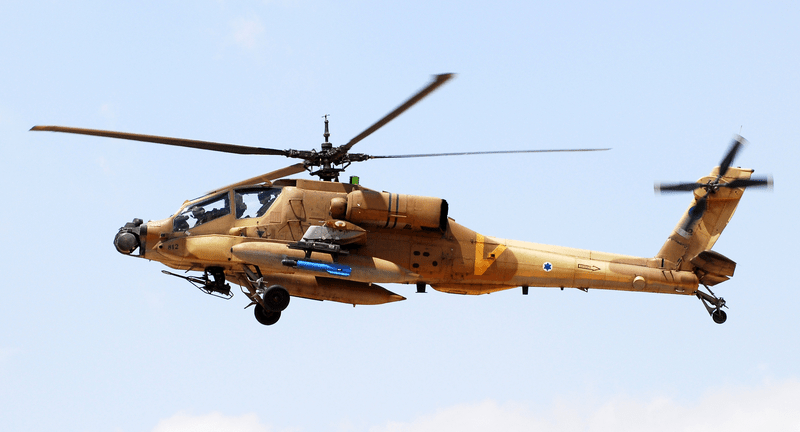MILITARY/WAR
Israel’s Wartime Decision Making
Published
1 year agoon

Shutterstock
It was late morning when I drove up to the gate at Camp Sde Teman just outside of Be’er Sheva in central Israel. I was there because I gained access to the Fire Direction Center of the Nahal Unit. I am the sole Westerner that has been allowed into a Fire Direction Center since the war began – journalist or otherwise. It was mostly serendipitous – I know two retired IDF helicopter pilots, and am an instrument-rated pilot myself, who writes a monthly column for FLYING magazine – a widely read aviation publication. The combination was enough to open a few doors.
What I witnessed inside one of those doors runs counter to everything I have read, viewed or heard about Israel’s bombing campaign in Gaza since Oct 7th.
An ex-Apache pilot, Major G, took me into the Nahal Unit’s Fire Direction Center after I surrendered my phone to a wood cubby with 40 other iPhones in it.
Entering the dusty room I saw over a dozen men and women sitting in front of screens of all sizes, observing live feeds from surveillance drones, and fielding calls from soldiers on the ground asking for air support. The largest, a wall-mounted flat-screen showed an overhead map of Gaza displaying the theater of operations. Smaller hand held tablets are used to switch between radios that connect ground troops to pilots.
After an initial lull where the soldiers devoured a tray of sandwiches that found their way inside, the room lit up. A call came in from a battalion commander on the ground in Gaza. A Hamas soldier with an RPG was seen in a window on the sixth floor of a residential building.
The officers in the room came together to decide on a weapons platform. There is an officer responsible for each of the four possible platforms available – fixed wing aircraft, helicopters, artillery and UAV’s. The officers were older than the rest of the people in the room and the ones commanding the helicopter and airplane platforms were ex-pilots.
Once the target was identified they looked at the surrounding buildings and considered a number of variables: How close are the nearest civilians? Where are the IDF troops in relation to the target? How much or how little firepower is needed to neutralize the threat? An IDF lawyer watched over the decision-making process to make sure that Israel abides by the LOAC (laws of armed conflict) which fall under the Geneva Convention.
After some discussion an Apache was summoned. While waiting for the helicopter to arrive, Major G asked me if I could tell a difference between the floor they were targeting and any of the other floors in the building. I stared at the live image but all seven floors looked identical to me. Major G told me to focus on the window itself. Sure enough, it was about a foot wider on either side. This is a common modification Hamas makes to civilian structures to give the RPG a wider angle of attack.
The Apache arrived and fired a laser-guided Hellfire missile. The missile did not damage the exterior wall. I watched in real time as it went directly into the room and exploded inside. All I was able to see was some dust blowing out the window. Surgical is the word that comes to mind.
Obviously, this is not always the case. Entire buildings have been leveled and civilian casualties have been mounting. I’ll come back to that in a moment.
Before even a congratulations could be uttered one of the soldiers at another monitor spotted a two-wheeled wagon being pulled by a donkey. It was moving through a neighborhood that had been cleared of civilians, and it was moving quickly. Everyone shifted to that monitor. The UAV zoomed in but the cargo in back was covered with a tarp.
I watched as the officers quickly discussed the situation, then decided not to engage.
I asked Major G why. “He’s not armed. We have no idea what’s in the wagon, and he is moving away from our troops, not toward them.” The target did not meet the criteria for a strike.
Before I could ask a follow-up, I heard a loud “Ma Zeh” (what’s this?) from across the room. On another monitor a soldier noticed five men sprinting from an abandoned building. Again, the officers conferred and declined to engage. Major G didn’t wait for my query. “They’re not holding weapons. They’re running away from our soldiers’ position.” Restraint is all I saw in that room. So, what of the death toll? I spoke to multiple soldiers, commanders and lawyers in the IDF at length about this. A few stubborn facts people seem unwilling or unable to absorb:
This conflict has produced a 1:2 ratio of combatant-to civilian deaths. This may not sound great until you compare it to the U.S. campaign in Afghanistan which produced a ratio of 1:12.
According to the IDF, every bomb dropped began with a legitimate target. We may have become immune to the term, “human shields,” but that doesn’t make it any less veracious.
Israel is fighting an enemy in Hamas that considers civilian losses on its own side as beneficial to its standing in international opinion. How does one fight an enemy that wants its own citizens to die?
Yes, numbers matter. But intentions matter just as much.
In my three weeks in Israel, what I witnessed was far from indiscriminate – both in bombardment and ideology. Everything is debated, discussed and considered ad nauseam. Dissent is alive and well in the State of Israel. What I saw was Israeli hand-wringing en masse, and a national circumspection on the position they find themselves in. There is no joy in the destruction of Gaza.
Back at the hotel, I received a call from Major G. He explained that the driver of the wagon we had seen earlier was stopped by IDF ground forces. The tarp was pulled back to reveal a flatbed full of anti-tank warheads.
Article written by Ben Younger an American screenwriter and film director.


